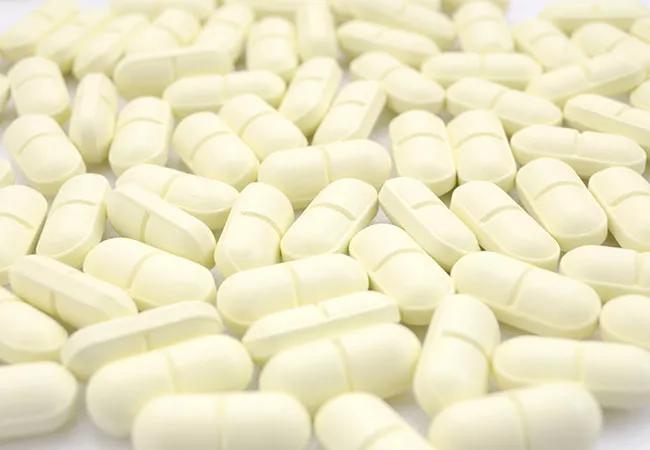Outcomes in tissue-eliminating versus necrosis-inducing procedures to treat BPH

In a recent Cleveland Clinic-led study, urologists examined outcomes in two different categories of transurethral prostate procedures (TUPPS) — tissue-eliminating and necrosis-inducing procedures — to better understand rates of discontinued urologic medication for patients with benign prostatic hyperplasia (BPH).
Advertisement
Cleveland Clinic is a non-profit academic medical center. Advertising on our site helps support our mission. We do not endorse non-Cleveland Clinic products or services. Policy
“We wanted to know how well these procedures do in terms of getting men off of urologic medications,” says Bradley Gill, MD, of the Glickman Urological & Kidney Institute’s Department of Urology and senior author of the study.
The research team reported their findings in the journal Urology.
Dr. Gill stresses to patients — and other physicians — just because BPH is a common condition, does not mean patients should have to live with it. “BPH is treatable with generally good outcomes,” he says.
With fairly minimal side effects associated with most first-line drugs, medical therapy can be a good option for many patients. “We typically start patients on medication to relax the prostate, an alpha-blocker (AB). We may combine it with a 5-alpha-reductase inhibitor (5-ARIs) if the prostate is significantly enlarged. This can downsize the prostate over six months or so,” remarks Dr. Gill. “Some men also respond to a low-dose of Tadalafil daily.”
Several new, minimally invasive, in-office treatments are also changing the landscape of BPH treatments. These include the prostatic urethral lift (UroLift®) and convective water vapor ablation (Rezum®). In general, procedural interventions are recommended if a medical management regimen fails or in more severe cases of BPH, which in some cases can include these newer procedures.
Study investigators analyzed available data from 5,150 TUPPs in the Cleveland Clinic system from 2001 to 2016 at three different intervals: three to six months, six to 12 months, and following 12 months. The tissue-eliminating cohorts included transurethral resection of the prostate (TURP) (n = 2304) and laser prostatectomy (LP) (n = 2549). Tissue-necrosis procedures included transurethral microwave therapy (TUMT) and transurethral needle ablation (TUNA) (n = 165). Simple prostatectomy (SP) (n = 132) was analyzed as a comparator, representing maximal tissue elimination.
Advertisement
At the three- to six-month interval, discontinued rates varied significantly by TUPP for 5-ARIs (P < .01) and AB (P < .01), but not anticholinergics (AC) (P = .128) or beta-3 agonists (B3A) (P = .358). Patients who underwent tissue-eliminating TUPPs had the highest discontinuation rates. Approximately 90% of patients discontinued medication after TURP and LP interventions, while around 80% of patients discontinued use of medication after TUMT and TUNA.
At the six- to 12-month interval, discontinued rates for 5ARI (P < .01) and AB (P < .01) with LP and TURP were higher than rates with TUMT and TUNA. For patients who underwent LP, around 85% of 5ARI and AB were discontinued, whereas around 86% of 5ARI and AB were discontinued after TURP. Only 67.2% of 5ARI and 73.2% of AB were discontinued after TUMT or TUNA. The highest discontinuation rates followed SP, with 98.6% of 5ARI and 96.7% of AB.
Beyond 12 months, TUPPs varied across 5ARI (P < .01), AB (P < .01), and AC (P < .030) utilization over the long term. Discontinuations rates for these medications were higher for LP and TURP compared to TUMT or TUNA, with SP demonstrating the highest rate of discontinuation. Rates for LP (52.9%) and TURP (62.0%) were higher than TUMT or TUNA (27.7%) but still lower than SP (87.3%).
“Our findings validate what many urologists likely would expect,” says Dr. Gill. “The more tissue you remove, the less likely you are to need BPH medications. At each interval, SP was the most effective, followed by LP and TURP.”
Advertisement
“TURP and LP are both excellent procedures for treating BPH, but it was interesting to see that they didn’t perform quite as well as SP in terms of medication discontinuation. Because this is more of an administrative study utilizing records as data, we can’t really comment further on why that is,” remarks Dr. Gill.
As a next step, the team plans continue examining BPH procedures, with the exclusion of TUMT and TUNA, to better understand retreatment rates as well as rates of subsequent endoscopic surgeries. Preliminary findings were presented at the 2019 American Urological Association conference, and the team plans to publish the data soon.
Advertisement
Advertisement

Reproductive urologists publish a contemporary review to guide practice

Two recent cases show favorable pain and cosmesis outcomes

Meta-analysis assesses outcomes in adolescent age vs. mid-adulthood

Proteinuria reduction remains the most important treatment target.

IgA nephropathy is a relatively common autoimmune glomerular disease that can be diagnosed only by biopsy

Oncologic and functional outcomes are promising, but selection is key

Cleveland Clinic is first to use the device, known formerly as the UroMonitor

First single-port renal vein transposition reduces recovery time and improves outcomes